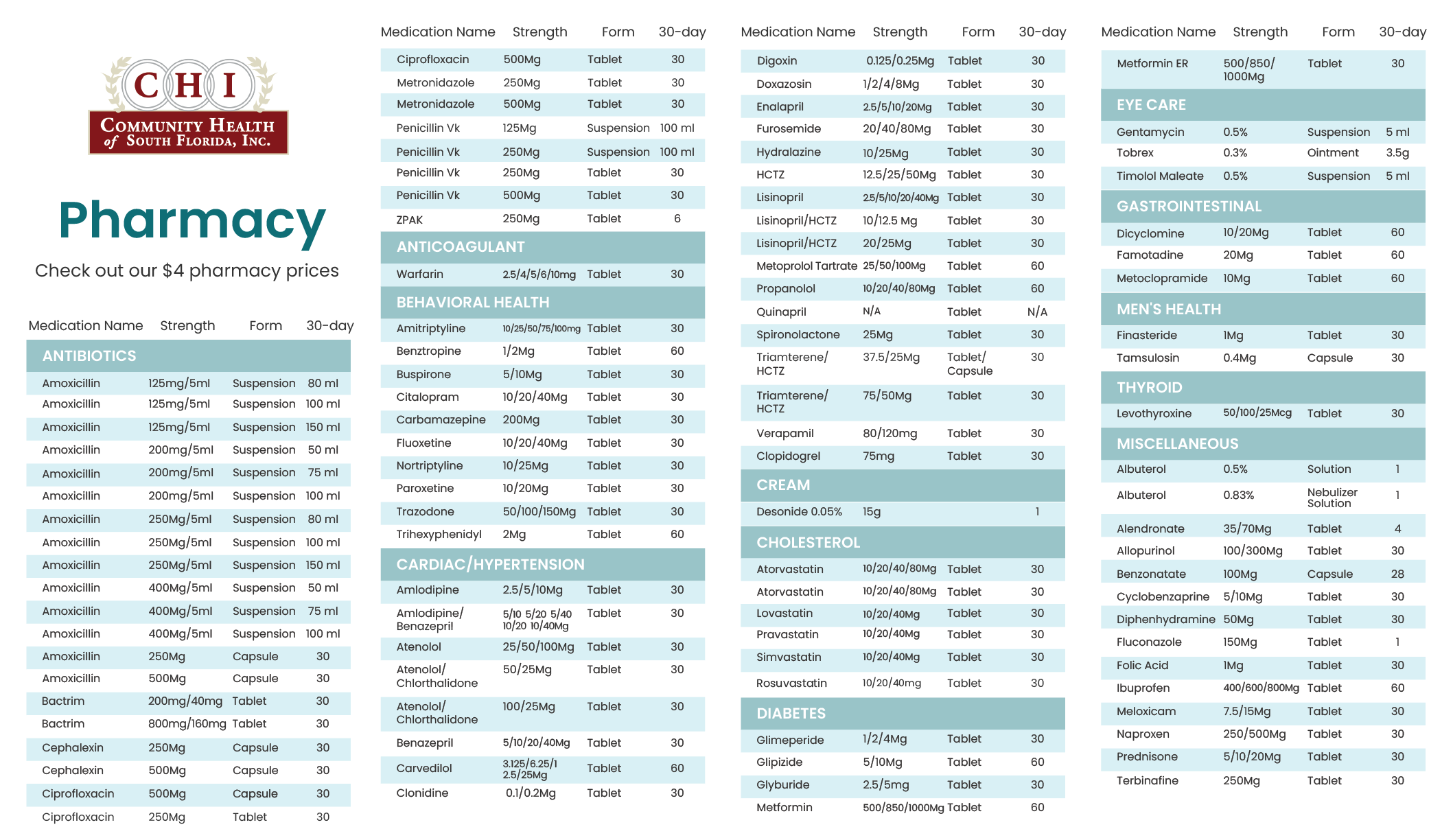Decoding the Newcovid-19 Variants: What You Need to Know
Haga clic en la bandera en parte superior de la página para traducir al español
Pezé sou drapo anwo paj la pou Kreyol

We are not yet out of the woods with COVID-19, according to the Centers for Disease Control and Prevention. This summer season, BA.2.86 and EG.5 emerged as new strains of the virus that causes COVID-19. All viruses evolve over time and these strains are called “variants.” These changes can affect how contagious a virus is and how severely it affects people. The latest variants have already initiated a surge in infections across the country. According to the World Health Organization (WHO), EG.5 became the dominant variant in August 2023, and they have labeled it as a “variant of interest.” BA.2.86, although less widespread, carries many variations.
“EG. 5 currently represent 25% of all COVID-19 cases,” said Community Health of South Florida, Inc. (CHI) Infection Control Specialist, Lara Nazon. “The same precautions should be taken as with earlier variants.”
The rise in cases is concerning. However, there have been no reports of an increase in disease severity, WHO states.
“Symptoms for these strains are less severe. However, it is more contagious and spreads faster,” said Patricia Philippe, Director of Education Infection, Prevention and Control at CHI. “That is why we are seeing an increase in cases.”
Philippe also says that low testing numbers are contributing to the spread of the disease.
“People are testing less,” she said. “Some are thinking that if they do not test, they are not infected.
The WHO also warns that even though the risk for severe cases and hospitalizations with the EG.5 variant is low; people should still take precautions. Philippe stresses that certain groups are more vulnerable to the disease and that adopting the necessary measures to protect you and your family will make a meaningful impact.
“Someone who is immunocompromised or has a weaker immune system can contract the disease from an asymptomatic person,” Philippe said.
“If you have COVID-19, it is important to protect your families, especially the elderly. You must test and isolate yourself as soon as you experience symptoms. Hygiene, social distancing and washing your hands will help to slow transmission.”
The CDC and other experts are closely monitoring both variants. More data is needed to see how the viruses will trend.
“We are in close contact with the CDC and are following COVID-19 guidelines,” said Philippe. “There is currently a peak at this time but in terms of severity and how it will trend, we do not yet know.”
Nazon advises people to not let their guard down. The most important preventative measure is to be up to date with COVID-19 vaccines and boosters and stay informed on how the virus is transmitted.
“COVID-19 is still here, and it is still spreading the same as before,” Nazon said. “If you are in a crowded or closed space, wear your mask. If you are coughing and have symptoms, wear a mask, and always maintain good hygiene.”





